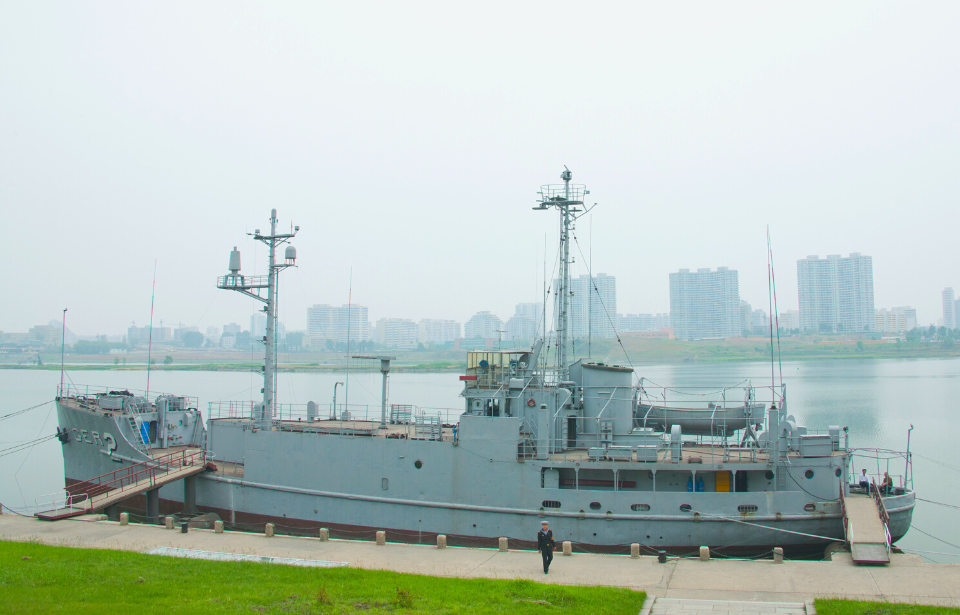The USS Pueblo prior to becoming a spy ship
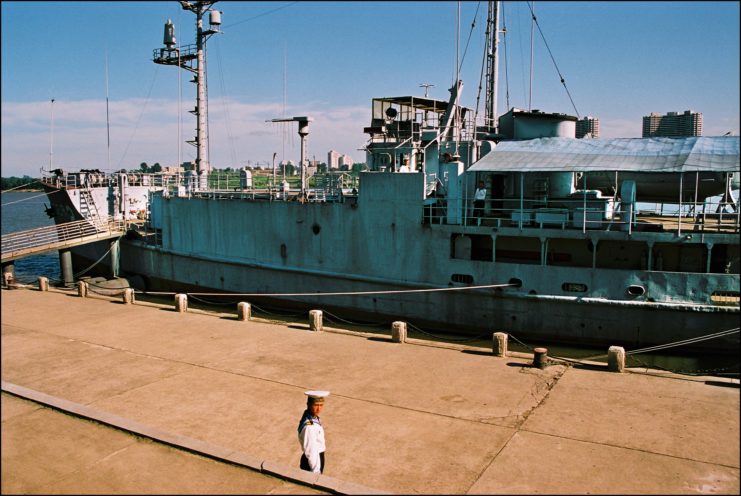
The Banner-class cargo ship FP-344/FS-344, originally constructed in 1944 for the US Army, entered service in April 45 under the operation of the US Coast Guard. Her primary function was the training of civilians bound for Army service, and she stayed within this role until 1954, when she was retired from active duty.
More than a decade later, the vessel underwent a significant transformation, assuming the new identity USS Pueblo and being reclassified as AKL-44. Her purpose shifted to that of a light cargo ship, before undergoing further modifications to serve as an environmental research vessel, designated as AGER-2.
In this new capacity, Pueblo was tasked with gathering intelligence for both the Office of Naval Intelligence (ONI) and the National Security Agency (NSA).
North Korea captures the USS Pueblo
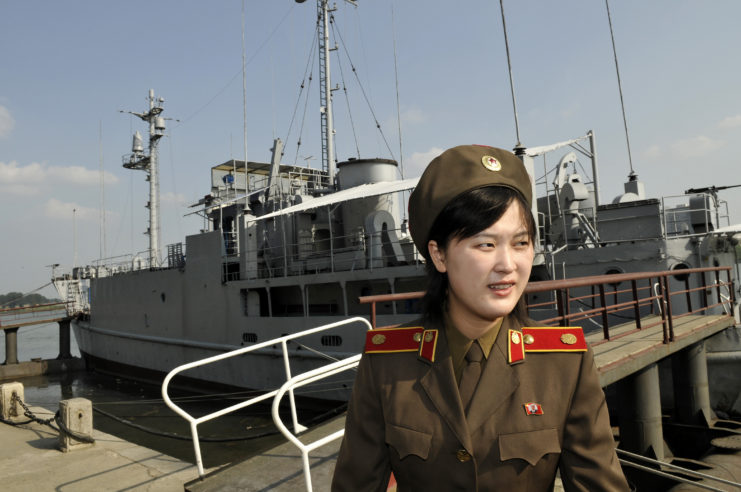
By 1967, the USS Pueblo had completed shakedown training and was prepared for her inaugural espionage mission. Departing on January 5, 1968, the ship’s mission was to collect intelligence on both North Korea and the Soviet Navy. Eleven days later, Pueblo reached the 42nd parallel, ready to patrol along the North Korean coast while maintaining a distance of at least 13 nautical miles from the shoreline.
On January 23, 1968, North Korea launched an attack on the Pueblo. Detected by a submarine chaser, the spy ship received an ultimatum to stand down or face fire. Attempting to turn away, Pueblo, being significantly slower than the North Korean vessel, couldn’t evade the threat.
Swiftly, the enemy submarine chaser was joined by four torpedo boats, an additional chaser and two Mikoyan-Gurevich MiG-21s. Armed with only a few handguns and a pair of M2 Brownings, Pueblo and her crew were ill-prepared for the assault. Nonetheless, they resisted allowing the North Koreans to board.
When escorted to the port city of Wonsan, the crew destroyed as much sensitive material as possible. In their efforts to dispose of top-secret documents, Pueblo‘s speed was reduced, inviting punishment. The North Koreans retaliated with a 57 mm cannon and several machine guns, causing damage to the vessel and claiming the life of one of the 83 sailors onboard, Duane Hodges. As well, two others, including US Marine Corps Sgt. Bob Chicca, were injured by enemy fire.
Ultimately, the North Koreans successfully boarded the ship. Each crew member was blindfolded, had their hands tied and faced physical abuse upon setting foot on land.
The American sailors were held captive for months
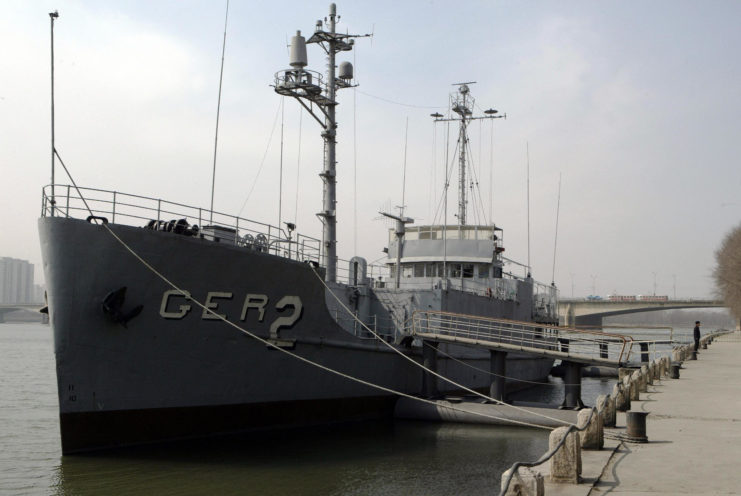
Signing the three A’s document

As aforementioned, the US was entrenched in the Vietnam War at the time of the USS Pueblo‘s capture. Fearing the escalation of tensions with North Korea, government officials pursued a diplomatic approach to address the situation. Exactly 11 months after the ship’s capture, both nations reached a satisfactory resolution to ensure the safe return of the crew.
On December 23, 1968, US Army Maj. Gilbert Woodward signed a document, known as the three A’s agreement, that was drafted by the North Korean government. It required the US acknowledge wrongdoing, issue an apology and promise to prevent similar incidents in the future.
The crew members were eventually released and returned home to the US, while Pueblo remained in North Korean custody. After being displayed in Wonsan and Hŭngnam, the vessel was eventually moved to the Victorious Fatherland Liberation War Museum in Pyongyang.
The USS Pueblo is still held captive
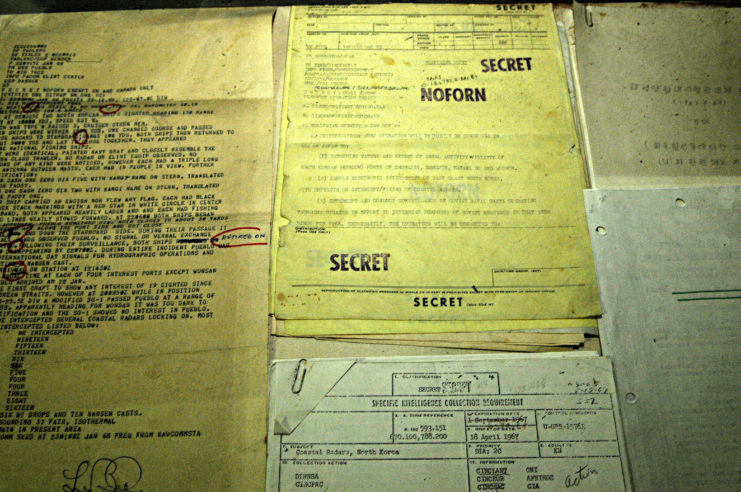
Upon capture by North Korea, the USS Pueblo was found to contain 10 encryption machines and thousands of highly classified documents, all of which were seized by the North Korean government. As such the incident stands as one of the most significant intelligence losses in modern history.
Although held in captivity, the US Navy maintains technical ownership of the spy ship, making her one of the service’s longest-serving vessels, as she remains officially active. Converted into a tourist attraction, the vessel undergoes routine maintenance, including a recent paint job commemorating the anniversary of the Korean War.
More from us: USS Gerald R Ford (CVN-78): The World’s Largest and Most Advanced Aircraft Carrier
Following former President Donald Trump’s designation of North Korea as a state sponsor of terrorism in 2017, survivors and families of deceased sailors from Pueblo seized the opportunity to sue the country under the Foreign Immunities Act. In 2021, they were granted $2.3 billion in compensation. However, the method or likelihood of receiving this compensation remains uncertain.
